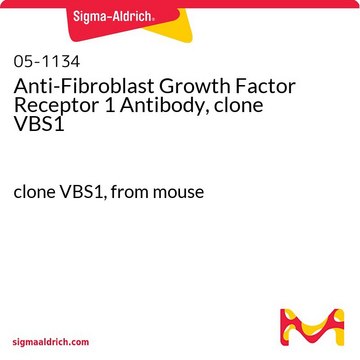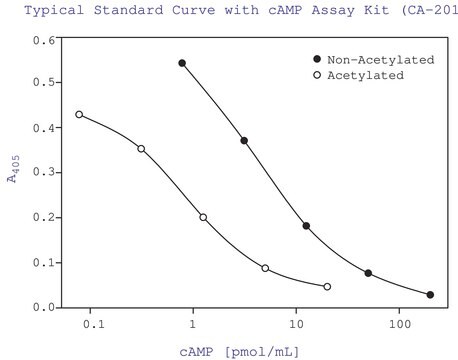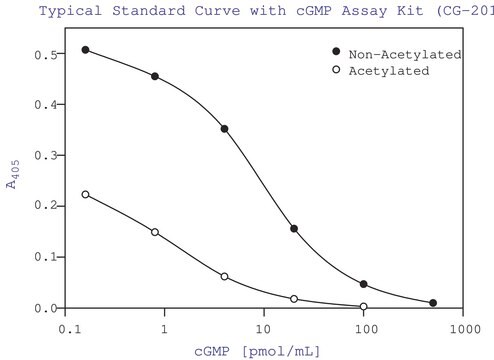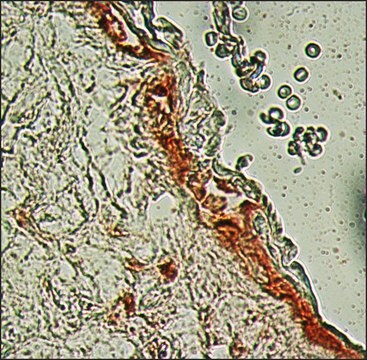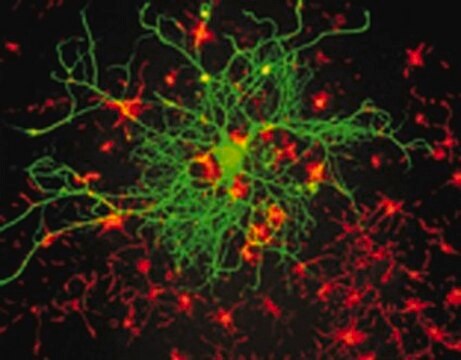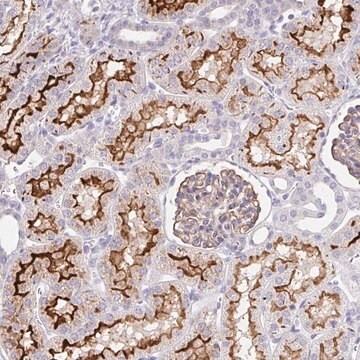Kluczowe dokumenty
F5421
Anti-Fibroblast Growth Factor Receptor-1 antibody produced in rabbit
~1 mg/mL, affinity isolated antibody, buffered aqueous solution
Synonim(y):
Anti-FGFR-1
About This Item
Polecane produkty
pochodzenie biologiczne
rabbit
Poziom jakości
białko sprzężone
unconjugated
forma przeciwciała
affinity isolated antibody
rodzaj przeciwciała
primary antibodies
klon
polyclonal
Formularz
buffered aqueous solution
masa cząsteczkowa
antigen 110-120 kDa
reaktywność gatunkowa
human
opakowanie
antibody small pack of 25 μL
stężenie
~1 mg/mL
metody
immunohistochemistry (formalin-fixed, paraffin-embedded sections): 1:200 using trypsin-digested human and animal tissue sections
immunoprecipitation (IP): suitable
western blot: 1:400 using an extract of FGFR-1 transfected cells
numer dostępu UniProt
Warunki transportu
dry ice
temp. przechowywania
−20°C
docelowa modyfikacja potranslacyjna
unmodified
informacje o genach
human ... FGFR1(2260)
Opis ogólny
Specyficzność
Barwienie produktu jest specyficznie hamowane przez peptyd immunizujący FGFR-1. Nie wykryto reakcji z ludzkim FGFR-2 i FGFR-3.
Immunogen
Zastosowanie
- immunoprecypitacji
- immunofluorocytochemii
- immunohistochemii
- immunoblottingu
Postać fizyczna
Oświadczenie o zrzeczeniu się odpowiedzialności
Nie możesz znaleźć właściwego produktu?
Wypróbuj nasz Narzędzie selektora produktów.
Kod klasy składowania
10 - Combustible liquids
Klasa zagrożenia wodnego (WGK)
WGK 2
Temperatura zapłonu (°F)
Not applicable
Temperatura zapłonu (°C)
Not applicable
Wybierz jedną z najnowszych wersji:
Masz już ten produkt?
Dokumenty związane z niedawno zakupionymi produktami zostały zamieszczone w Bibliotece dokumentów.
Nasz zespół naukowców ma doświadczenie we wszystkich obszarach badań, w tym w naukach przyrodniczych, materiałoznawstwie, syntezie chemicznej, chromatografii, analityce i wielu innych dziedzinach.
Skontaktuj się z zespołem ds. pomocy technicznej